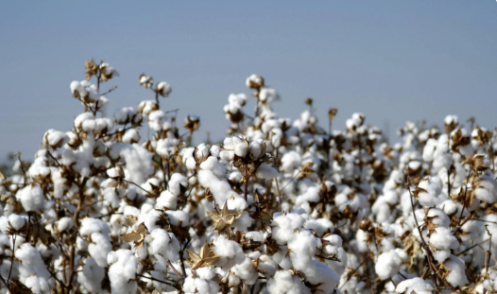According to the notarial inspection data of cotton quality in China, as of April 9, 2025, the total public inspection of cotton in 2024/25 in China was 6.786 million tons (of which the total public inspection of cotton in Xinjiang cotton region was 6.6671 million tons). Considering that since early April, the daily increase of public inspection of cotton in China has dropped to about 0.10 million tons (the minimum daily increase is 0 million tons, and the volatility is slightly greater), Therefore, the total amount of Xinjiang/national cotton public inspection has been basically clear this year. Institutions, cotton-related enterprises, speculators focus on the full shift to 2024/25 domestic cotton consumption, all parties to the second quarter of 2025, the third quarter of cotton textile enterprises open probability, spinning profits and the situation of concern about the situation increased than the first quarter, bearish atmosphere difficult to dissipate in the short term.
According to the latest report of the China Cotton Association, China’s cotton consumption in 2024/25 was 7.94 million tons, an increase of 40,000 tons over the previous year, an increase of 0.5%. According to the USDA’s March report, 2024/25 China’s cotton consumption forecast is still 8.165 million tons (the same as in February), but 305,000 tons less than the previous year’s 8.47 million tons, down 3.6%. Some large cotton/cotton textile companies have lowered their forecast for China’s cotton consumption in 2024/25 to less than 7.5 million tons, which is lower than the nearly 500,000 tons published by the China Cotton Association, mainly for the following reasons:
First, in 2024/25, the substitution of global/Chinese chemical fiber raw materials for cotton is becoming stronger and stronger, especially under the premise of large fluctuations in cotton inner and outer plate and low profits of cotton yarn, textile enterprises have a high preference for polyester staple fiber and viscose staple fiber. In addition, since June 2022, the United States, the European Union, Japan and other countries have imposed import bans on Xinjiang cotton products, which has also led to some export-oriented enterprises to speed up the production of blended yarn and chemical fiber yarn. In contrast, non-cotton fibers surpass pure cotton in some properties, such as strength, wear resistance, wrinkle resistance, etc., and have won the favor of some end customers, while the application of polyamide, spandex and other chemical fibers in the clothing category has continued to increase, and the production capacity has continued to expand, promoting the development and innovation of non-cotton alternative products.
Second, the tariff war between China and the United States will lead to a gradual and substantial reduction in orders for China’s export of traceability cotton products to the United States after March until “decoupling”, and the demand for imported cotton by textile enterprises will drop again and again. On April 10, Trump said that tariffs on Chinese goods would be raised from 104% to 125%, plus before Trump took office, the US side had imposed an average 19% tariff on China (of which cotton clothing is 16.5%-17.5%), so the total tariff on cotton products exported to the US has been no less than 141%. China’s exports of cotton textiles and cotton clothing to the United States will be completely halted. According to statistics, the import of cotton products in the United States in February fell by nearly 10% month-on-month, of which the import of Chinese cotton products fell sharply in March and after imports or even all zero.
Third, the United States requires other negotiating countries to impose tariffs on Chinese imports in exchange for US tariff reductions, thus making it significantly more difficult for Chinese cotton products to enter the US market through a “third party”. On April 10, the Trump administration announced the suspension of tariffs on 75 countries for 90 days, Vietnam, India, Malaysia, Bangladesh and other Southeast Asian/South Asian cotton products exports to the United States to get a “respite” opportunity, but in exchange for the trust of the Trump administration, a “name”, tariffs on Chinese imports.
Post time: Feb-15-2025


